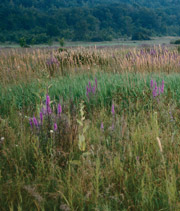 |
 |
 |
|
Coverage Concerns Vacant land" coverage Meaning of “vacant” is key to coverage By Roy C. McCormick A notable feature of personal liability coverage (Section II) in homeowners policies is the inclusion of “vacant land” within the scope of basic coverage. The extension is found in policies in general, including those drafted by the American Association of Insurance Services and the Insurance Services Office for use by affiliated and subscriber companies. A specific exclusion applies to bodily injury or property damage arising out of a premises owned by or rented to an insured that is not an “insured location” or “insured premises.” The terms are defined in the various policies to include owned or rented “vacant land” other than farmland. The upshot of the exception to the exclusion and the pertinent definition is that protection applies to “vacant land.” Our focus is on the ownership or use of vacant land apart from the residential property. It might have been inherited or acquired with the intent of building a house in the future. Personal liability coverage under a homeowners policy extends to vacant land acquired, inherited or rented by an insured. “Vacant” is the key word. The land must be free of buildings or structures of any kind for coverage to apply. In this connection, the value of Coverage II is obvious. “Vacant land” is not defined in homeowners policies. As enforced by higher courts, its meaning is the common-sense understanding found in popular dictionaries. In a 1998 decision, the Supreme Judicial Court of Massachusetts declared that “vacant land” meant land (ground) with no structure or building on it. The court also concluded that a “reasonably intelligent person would understand the term ‘vacant land’ (used in the pertinent language of the policy) to mean land that is free of permanently affixed structures,” and would conclude that land with an abandoned building on it was not vacant. The case providing the guidelines, Citation Insurance Company v. Brenda Gomez et al., arose from injury to a child on a large section of land that had been inherited by a homeowners insured from her mother. The injury occurred in a concrete bunker associated with the remnants of a radio tower that had been used by the insured’s father in his trucking business and that had been abandoned and not used for 30 years. In the course of litigation, the homeowners insurer filed an action for judgment declaring it had no duty to defend or indemnify. It appealed the trial court’s judgment in favor of its insured, contending that, although its policy covered “vacant land” apart from the premises described in the policy declarations, the subject land was occupied by structures. The trial court judgment was reversed in favor of the insurer with the conclusion that the land in question was not “vacant land” and therefore was not an “insured location” covered by the policy. That conclusion is affirmed by other high courts. Popular dictionaries are enlightening regarding the meaning of “vacant.” A sampling reinforces our understanding of coverage for acquired land under homeowners policies, and how it may be explained to insurance buyers. The American Heritage Dictionary specifically describes a “vacant lot” as one “not occupied or put to use,” and the lone word “vacant” to mean “containing nothing, empty.” The World Book Encyclopedia defines “vacant” as “empty” or “not filled” when modifying a space, such as a lot or section of land. The American College Dictionary defines “vacant” as “having no contents, empty, void.” It was defined in Webster’s Third New International Dictionary as “to be empty, be free.” Dividing line is clear The dividing line between coverage and no coverage for “vacant land” claims is clearly defined by the decision of the Georgia Court of Appeals in a 1994 case briefly identified as Cotton States Mutual Insurance Company v. Smelcer. The owner of inherited land on which his forebears had resided was included in a wrongful death lawsuit brought by the father of a firefighter who was killed while responding to a fire on the property. Vandals had set fire to an abandoned house in which the older people had lived. There was also an abandoned country store on the land. The current property owner referred the matter to the homeowners insurer of the residence in which he resided at another location. The insurer brought a declaratory judgment action to determine if the claim was within the scope of policy coverage. The insured said that he understood “vacant land” to be unoccupied or unused land. The insurer argued that the parcel in question was not “vacant land” because it contained a house and moved for summary judgment. The trial court concluded that the term “vacant land” was ambiguous and denied the insurer’s motion. The Georgia Court of Appeals said that “ … ‘vacant’ is readily understood in its plain, ordinary and popular sense,” and that dictionaries supply such meaning. The judgment of the trial court was reversed in favor of the insurer and against the insured. Homeowners insureds who hold vacant land with the intent of building a dwelling on it are protected not only while the lot is vacant but also while a one- or two-family dwelling is being built on it for them by a general contractor. It must be noted that coverage does not apply to vacant land that is farmland. Coverage for farmland is secured by endorsement or separate insurance. When an agent or broker learns of the ownership or acquisition of vacant land by a homeowners insured, that agent should promptly inquire about the intended use of the land and verify that there are no structures on it. The insured will be pleased to learn that in most instances the policy will automatically provide liability coverage. The agent or broker should ask to be kept up to date on plans for dwelling construction to ensure continuous sound insurance protection. * The author |
|
|||||||||||||
| ||||||||||||||
